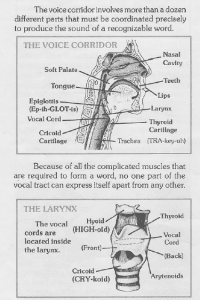Select a Category
"19 Kids & Counting" Dead?
"19 Kids and Counting" - Jim Bob Duggar Family
"All Other Churches Are WRONG!'
"Bringing Up Bates" - Gil Bates Family
"Come To Jesus" Salvation Calls
"God's Not Dead" Movie
"i'll pray for you"
"Just read your Bible"
"Keep Your Legs Shut"
"Keep Your Mouth Shut
"KIds" vs "Lambs"
"Learn to please your husband or else"
"Never criticize your pastor"
"Never Spoil Your Baby"
"Nike"
"Noah" Movie
"Our Church Is Different"
"Shut Up and Take the Abuse!"
"Taking" a Wife
"Trust Your Daddy To Pick Your Husband"
"You are not modest enough"
"You are praying wrong"
"You Aren't Happy Enough"
"You Aren't Humble Enough"
"You Never Were A Christian"
"You're doing it wrong!"
"You're just mad at God"
'Counting On' - Jill Duggar Dillard and Jessa Duggar Seewald
'Jill and Jessa: Counting On' - Duggar Family
13:24: A Story of Faith and Obsession by M. Dolon Hickmon
15 Passenger Vans
20 and Counting by JimBob & Michelle Duggar
200 Year Plan
2015 Measles Outbreak - Anti Vaxxers
2016 Presidential Race
2020 Presidential Election
2nd Amendment Rights
40 Days to Save America - Rick Scarborough
49 Character Qualities
5-Day Club
7 Basic Needs of a Husband / 7 Basic Needs of a Wife
A child's needs are sin
A Clever Boy - Jeffrey Witthauer
A Devil Sitting On Your Face
A Devil Under Every Bush
A Fat Devil Under Every Bush
A Feminist Devil Under Every Bush
A Full Quiver by Rick & Jan Hess
A Gay Devil Under Every Bush
A Love That Multiplies by JimBob & Michelle Duggar
A Love That Multiplies Review - Calulu
A Matter of Basic Principles by Don Veinot
A Measure of Light - Beth Powning
A Mexican devil under every bush
A Sex Robot Under Every Bush
A Smelly Devil Under Every Bush
A Socialist Devil Under Every Bush
A wife's needs are sin
A Woman's Choice
A Womans Submission
A Year of Biblical Womanhood - Rachel Held Evans
ABC's Nightline Prime - Purity Balls
Abortion
Abortion For a Medical Reason
Above Rubies (Nancy Campbell)
Abstinence
Abuse
Abuse in the Homeschooling World
Abuse in Troubled Teen Homes
Abuse Victims in the Church
Abused Wives
Abusive People
Acceptance of everyone
Accountability
Adding Chores/Must Do
Adoption
Adoption Crowdfunding
Adoption From Congo
Adoption from unregulated foreign countries
Adoption Rehomers
Adultery
Advance Training Institute (ATI) / Institution for Basic Life Principles (IBLP) (Bill Gothard)
Adventures in Odyssey - Focus on the Family - James Dobson
Adventures in Recovery
AJ
Al Mohler
Aleitheia Bible Church
Alex Grenier
Alienation
All The Way Out (Jane Douglas)
Alone But Not Alone
Alone But Not Alone Academy Award Nomination Fraud
Alternative Sexualities
Always Saved
American Boys Adventure Catalogue (Vision Forum)
American Family Association (Don Wildmon)
American Vision (Gary DeMar)
An Educated Devil Under Every Bush
An Unmarried Female Devil Under Every Bush
Anais Chartschenko - The Monsterium
Andie Redwine
Andrea Yates
Animal Cruelty
Animal House
Announcements
Anorexia
Answering the Quiverfull Party Line: Barbie Getzreal
Answers in Genesis - Ken Ham
Anti Intellectualism
Anti Science
Anti Semitism
Anti Semitism in the Church
Anti Vaccination
Anti Vaxx
Anti-education
Anti-immigration
Anti-Intellectualism
Anxiety
Any Cause Divorce
Any Criticism or Suggestion
Apostate - Kevin Swanson
Are They All Yours - Zsuzsanna Anderson
Ariel Bradley - ISIS Bride
Arrogant Unloving Christians
Asking Others to Fund Your Adoption
Assemblies of God Church
Assisted Suicide
Atheism
Atheists
Attaching Holines to the Mundane
Baby conceived by rape
Bad Midwifery
Baking / Cooking from Scratch
Bankruptcy
Banned
Banning & Burning Books
Banning Leggings/Yoga Pants
Baptist Taliban
Baptist Taliban and Beyond - Cindy Foster
Baptist Taliban by Cindy Foster
Barbie is pornography
Bart Erhman
Baseless Conspiracy Theories
Be Fruitful & Multiply / God's Vision for Families by Nancy Campbell
Beautiful Girlhood
Beautiful Girlhood by Karen Andreola
Beautiful Girlhood Catalogue (Vision Forum)
Because Penis
Becoming Worldly
Before You Meet Prince Charming: A Guide to Radiant Purity by Sarah Mally
Begging For Money From Supporters
Being controlled by fear
Being Single in a Couples World
Believing Illness Caused By Stress or Not Being Right With God
Benefits of Marriage
Bestiality
Bethany Deaton's Death
Bethel Redding
Betty Crux
Bible Interpretation
Bible Literalism
Biblical Chastisement
Biblical Culture
Biblical Holidays
Biblical Manhood & Womanhood
Biblical Marriage
Biblical Polygamy
Biblical Science
Big Happy Family Vision
Bikinis
Bill Gothard
Bill Gothard Sexual Harrassment
Bill Gothard's Links To The Duggar Family
Birth control
Birth Control
Birth Control
Birth Control Causes Whoredom
Birth Control: How Did We Get Here? by Kevin Peeples
Blaming birth control
Blaming Body Art
Blaming Children For Acting Like Children
Blaming communism
Blaming dating
Blaming Disasters on Homosexuality
Blaming evolution
Blaming Feminism
Blaming Gender Identity
Blaming Government
Blaming Hollywood
Blaming homosexuals
Blaming Liberals
Blaming Mothers
Blaming Pants
Blaming Parents
Blaming Peoples Needs
Blaming Period
Blaming public schools
Blaming Satan
Blaming Sexual Assault Victims
Blaming Social Media
Blaming Sports
Blaming Technology
Blaming the media
Blaming the victim
Blaming Women
Blaming Womens Hormones
Blanket Training
Blessing Your Husband
blindly following leader
Blogging is a Sin
Blogging Tips - SEO
Bob Grenier
Bob Jones
Bob Jones University
Bob Larson
Body Image
Body shaming
Bold Christian Living (Jonathan Lindvall)
Born Liberal Raised Right
Bosch Mixer
Botkin Syndrome
Boundaries
Boundaries by Henry Cloud & John Townsend
Bounded Choice
Boy Meets Girl by Joshua Harris
Boy Scouts
Brandon & Kent Schaible
Brandy Woods
Brian McLaren
Bride Price - Selling Your Daughters
Bristol Palin - Second out of wedlock pregnancy while promoting abstinence
Brittany Maynard
Broken Daughters
Buddy System
Bulimia
Cabbage Patch Dolls
Calling Husband "Lord"
Calulu
Calvary Chapel
Calvary Temple - Sterling
Carri Chmielewski
Carrie Hurd Thinks Josh Duggar Played 'Doctor'
Catholic Bashing
Catholic Priests Sexual Abuse
CBN - Pat Robertson
Cell Phones Are Portals to Hell
Chalcedon Presbyterian Church
Charities Illegally Dabbling in Politics
Charity to less fortunate
Charles Provan
Charlie Fuqua
Chemical Dependency
Child Abuse
Child Abuse Disguised as Discipline
Child Cruelty
Child Endangerment
Child Evangelism Fellowship- Christian Youth In Action
Child Exploitation
Child Hoarders Via Adoption
Child Labor
Child Molestation
Child Molestation
Child Murder
Child Neglect
Child Protective Services
Child Sexual Abuse
Child Training
Child Training Tips - Reb Bradley
Childish weak men
Children are a Blessing - Moore Family Films
Children Are Owned By Parents
Children's Needs Are Sin
Chores, Chores, Chores!
Chris & Wendy Jeub
Christian Apologetics
Christian Control of Government
Christian Culture War
Christian Elitism
Christian Fundamentalism
Christian Internet Flame Wars
Christian Isolation
Christian Modesty
Christian Modesty and the Public Undressing of America by Jeff Pollard
Christian Moms of Many Blessings
Christian Parenting
Christian Patriarchy Movement
Christian White Supremacists
Christians & the Spanking Controversy by Samuel Martin
Christians and Addiction
Chucking College by Melanie Ellison
Church Planting
Claiming Persecution Where None Exists
Clare Kicked Out of Prom For Dress - "Fuck The Patriarchy"
Cloth Diapering
Coach Dave Daubenmire
Coded Language
Coercive Religious Groups (Cults)
cognitive dissonance
Colin Campbell
College
College Films: American Pie
College for Daughters
Common Law Marriage Only
Compassion
Complementarianism
Complementarism
Complimentarianism
Confederate Flag
Conferences
Confession
Conformity
Contentiousness with other Christians
Control
Control by sexual assault
Controlling Emotions & being cheerful always
Controlling Others
Controlling women
Council on Biblical Manhood & Womanhood (John Piper)
courtship
Courtship / Betrothal
Courtship or Dating - Dennis Gundersen
Covenant Breaking
Covert Abuse
Crafts Are A Sin
Created To Be His Help Meet by Debi Pearl
Created To Be His Help Meet Reviewed by Libby Anne
Created To Need A Help Meet - Michael Pearl
Creation Science / Creationism
Creationism Museum - Ken Ham
Criminal Christians
Crushing Daisies ~ Ways in Which Patriarchal Fundamentalism Harms Its Children
CT School Shooting
Cult Behavior
Cultural vs. Normative
Culture & Christianity
Daily Bible Reading
Dale Ryan & Junita Ryan
Dan Fincke - Camels With Hammers
Dancing
Dangerous People
Danica Dillion Sues Josh Duggar
Dappling in Politics
Dark Christianity (Dogemperor)
Dating
Daughter of the Patriarchy by Sierra
David Barton (Crappy Historian)
Daycare for Children
Daychild for Children
Dealing With Adult Children
Dealing With Toxic People
Death Penalty for Adultery
Debt-Free Living
Debunking Christian Myths
Deciding who is 'saved'
Deconversion Stories
Defeating the Dragons - Samantha
Defend The Faith Ministries - John McTernan
Defining Manhood
Defrauding
Demanding Abuse Answer from HSLDA
Democrats
Demonic Influences
Demonic Possession
Demonizing Feminism
Demonizing Others
Demons everywhere
Denial of Medical Needs
Denial of Mental Heath Treatment
Denim Jumpers
Denny Kenaston ~ Charity Ministries
Denying Children Decent Education
Denying Spouse Sex
Depression
Depression
Devaluing Children
Dicussion of Faith
Dinesh D'Souza
Dinesh D'Souza
Dismissing Abuse
Disney's Tangled
Distancing Self From Doug Phillips & Patriarchy
Divorce
Divorce & Remarriage
Divorce and Remarriage
Do Hard Things by Brett & Alex Harris
Domestic Abuse
Domestic Abuse Can Be Prayed Away
Domestic Abuse/Violence
Dominionism / Christian Reconstruction
Don't Sleep
Doug & Nancy Ann Wilson
Doug Phillips
Doug Phillips Adultery
Dr Kenneth Copley Sexual Abuse
Dr. Emerson Eggerichs
Dr. Joe Morecraft
Dr. Kenneth Copley
Drinking the Koolaid
dualism
Duck Dynasty Phil Robertson GQ Interview
Duggar Family Homophobia
Duggar Lawsuits
Duggar Media Obsession
Duggars Raising Children on Television
Early Marriage
Easter Greetings
Eating Disorders
Economic Abuse
Education Is Evil
Educational Neglect
Effects of Long Term Stress
Egalitarianism
Elitism
Emasculation
Embracing sexuality
Emotional Incest
Emotional Purity
Emotional Purity
Emotions
end times mania
Enmeshment
Enslaving Non-Believers
Equality Central
Escape by Carolyn Jessop / FLDS
Eschatology
Examining Faith
Examples of Quiverfull Gone Wrong
Excusing Abuse
Exodus Ministries Closes
Exorcism
Exploiting Children
Extra Biblical
Extreme Tithing
ezer kenedgo
Facebook Live
Fake Pearl Stories
Fake Testimony
Fallen From Grace by Bruce Gerencser
Families Were Grace is in Place by Jeff VanVonderen
Family Driven Faith by Voddie Baucham
Family Driven Faith: A Former Independent Fundamental Baptist Pastor's Perspective on Biblical Manhood & Womanhood
Family Integrated Church
Family Man, Family Leader
Family Members Getting Religion
Family Ministry / Service
Family Reformation Magazine (James & Stacy McDonald)
Family Research Council
Fascinating Womanhood by Helen Andelin
Fascinating Womanhood Review - Samantha
Fat Shaming
Father Worship
Father-Daughter Purity Balls
Fathers Own Daughters
Fear
Fear Based Theology
Fear Mongering
Fear of Government
Fear of Hell
Fear of Technology
Fear tactics
Fearing your husband
Female Cultural Enforcers
Femina
Feminazi
Feminine Clothing Only
Femininity vs Feminism
Feminist in Spite of Them - Sarah Henderson
Feminists
Feminists Are Communists
Fetishing Motherhood
Fetishizing Virginity
Fifty Shades of Grey
Films
Finding Worth and Value
First Baptist church Hammond Indiana Jack Schaap
First Kiss at the Altar
Flirting and/or Adultery
Focus On The Family (James Dobson / Jim Daly)
Followers of Christ faith healing killing children
Food Stamps
Food Stamps/Subsidities For The Poor
For a Glory and a Covering by Doug Wilson
Forced Into Quiverfull
Forgiveness
Forgiveness No Matter What
Formulaic Religion
Francis & Edith Schaeffer
Frank Schaeffer
Franklin Graham
Fred Phelps
Fred Phelps Sr. Death (Westboro Baptist)
Freedom
Freedom from Patriarchy
Friends of NLQ
Friendships with Christians
Frozen
Frozen Embryos
Frugality
Fruit of the Spirit
Fundamentalism
Fundraising
Fundraising for college
Gardening
Gaslighting
Gay Agenda
Gay Marriage
Gay Parents
gender dysphoria
Gender Equality
Gender Roles
Generation Cedar by Kelly Crawford
Generational Curses
Generations With Vision - Kevin Swanson
Geoffrey Botkin
Geronimo Aguilar
Geronimo Aguilar child molestation investigation
Get Along Home - Cindy
Get Along Home Blog
Get Married: Any Man Will Do
Getting Away From Your Abuser
Gil & Kelly Bates
Giving Away Pieces Of Your Heart
Gloriavale New Zealand
Go To Church!
God & the death of a baby/child
God of the Possible - Greg Boyd
God's Buried Children by Daniel Farcas
Godly Seed
Good News Club
Gossip Disguised as Prayer
Gossip in the church
Grace & Truth Books
Grace fired from Bob Jones University
Greek
Greg Boyd
Grieving
Group Think
Growing Kids God's Way / Babywise by Gary Ezzo
Growing Up Duggar - The Duggar Girls
Guarding Your Heart
Guilt in Evangelical Christianity
Gun Control
Halloween
Halloween
HARO
HARO
Harry Potter Books
Hate Disguised As Love
Hate Group (Souther Poverty Law Center)
Hate Speech
Headcovering
Healthy Boundries
Help Meet
Hephzibah House
Herbal Medicine
Heritage Defense
Highlands Ministeries - R.C. Sproul Jr
Hillary Adams
Hitler or The Holocaust as a comparison
Holidays With Family
Holy Sex by Michael Pearl
Holy Sex Review - Suzanne Titkemeyer
Home Based Businesses Only
Home Birth
Home Births Gone Wrong
Home Church
Homemade Bread
Homemaking
Homemaking Skills
Homeschool
Homeschoolers Anonymous
Homeschoolers Anonymous - R.L. Stollar
Homeschooling Legality
Homeschooling Only
Homeschooling Today
Homeschooling World - Mary Pride
Homeschooling's Invisible Children
Homesteading
Homosexual Agenda in "Frozen"
homosexuality
Homosexuality in the Boy Scouts
Honoring Parents
Hope Chapel - Reb Bradley
Hope Chest
Hopewell's Posts
Hospitality
Hospitality
Hospitals and/or Doctors
Hot Topics
How Did I Get In This Mess?
How Should We Then Live? by Francis Schaeffer
HSLDA
Humor
Hupotasso
Husbands Love Your Wives
Husbands Own Wives
Hyles-Anderson College
Hypocrisy - Leilyn Fields Mac
Hypocrites in the Church
I Am So Much More Than a Maiden of Virtue!
I Fired God by JOcelyn R. Zichterman
I Kissed Dating Goodbye by Josh Harris
Identification Abuse
Idle hands
IHateKevinSwanson.com
IHOP Orgy Murder
Illness Equals Sin
Illogical Logic - Word Salad
Immigration Reform
In Search of a Help Meet by Michael Pearl
Incongruous Circumspection
Independent Fundamental Baptist Churches (IFB)
Infertility
infidelity
Instant, Joyous, Obedience
International House of Prayer IHOP
Islam
Islamaphobia
Isolation
Isolation
Israel Wayne)
Issues
It Is Really All About Sex
It's (Not That) Complicated by Anna Sophia and Elizabeth Botkin
It's Just God by Wendy Thomas Russell
IVF
J.O.Y (Self Denial)
Jack Hyles
Jack Schaap
Jackson Brothers Rape SIster Ten Years
Jan & Rick Hess
Jana Duggar Leaving Home
Jane Eyre's Sisters - Jody Gentian Bower
Jealousy between Female Cultural Enforcers
Jen's Gems
Jennie Chancey
Jerry Falwall
Jerry Wayne Jones St
Jessa Duggar & Ben Seewald
Jessa Duggar and Ben Seewald
Jessa Duggar and Ben Seewald
Jessa Duggar Gives Birth
Jesus is the Answer
Jesus was a Feminist
Jews
Jezebel Spirit
Jill & Derick Dillard Nepal Mission Trip
Jill and Derick Dillard Using Donations For Personal Expenses
Jill and Jessa Duggar Feud
Jill Dillard & Jessa Seewald Feud
Jill Duggar and Derick Dillard El Salvador Mission Trip
Jill Duggar Dillard and Jessa Duggar Seewald Fox News Interview
Jill Duggar Engaged
Jill Duggar Having Baby
JimBob & Michelle Duggar
Jinger Duggar and Jeremy Vuolo
Joel Osteen
John Hagee
John McTernan
John Piper
Jonathan Lindvall
Josh & Anna Duggar
Josh Duggar Accused of Sexual Abuse
Josh Duggar Infidelity Ashley Madison
Josh Powell
Judge William Adams
Judgementalism
Judging Other Churches/Denominations
Judging Others
Judy Kay Jones
Julianna Snow Decides Her Own Medical Future
Julie Anne - Spiritual Sounding Board
Jurisdictions
Justice Is No Lady
Justifying Abuse
Justifying Bad Behavior
Justin Harris Arkansas Rep Rehomed Children With Rapist
Kalyn's Secret by Lisa and Kalyn Cherry
Kara Neuman
Keeper at Home
Keepers At Home (Keepers of the Faith)
Keeping Cheerful Always
Kelly Silk
Ken Ham
Ken Ham Bill Nye Creationism Debate
Kenneth Copeland
Kent Hovind Released From Prison
Kevin & Elizabeth Shatz - Lydia Shatz
Kevin Swanson
Kevin Swanson Hissy Fit
Kevin Swanson's Fascination With Bestiality
Keys for Kids - Children's Bible Hour
Kid Collecting
Killing Homosexuals
Kim Davis Martyrbates Over Gay Marriage
King James Only
Kirk Cameron
Kobayashi Maru ~ The No-Win Scenario
Labeling Emotions as Wrong
Lack of education for women
Ladies Against Feminism
Ladies Against Feminism by Mrs. Lydia Sherman and Mrs. Jennie Chancey
Ladies Pants Suits
Larry & Carri Williams - Hana Grace-Rose Williams
Larry Solomon - Biblical Gender Roles
Latebloomer
Laughter is Good Medicine
Laura’s Story
Law & Order: SVU covers Duggar scandal
Lax Homeschool Educational Standards Nationwide
League of Grateful Sons
Learned Helplessness
Learning - Shadow Spring
Learning. Liberty.
Leaving Church
Leaving Fundamentalism - Jonny Scaramanga
Leaving Fundamentalism Evangelicalism
Leaving Quiverfull
Leaving your husband
Legalism
Leggings or Pants
LGBT
Liberty
Liberty University - Jerry Falwell
Lies That Women Believe by Nancy Leigh DeMoss
Life Stories
Lifeway Stores bans Rachal Held Evan's book
Like-Minded Fellowship
LInda Harvey
Lisa & James Pennington Identification Abuse
List of Qualities for Future Spouse
Living Liminal
Long Hair Only For Women
Lori Wick
Lourdes Torres sues Doug Phillips
Love
Love
Love & Respect Ministries - Dr Emerson Eggerichs
Love Wins - Rob Bell
Love, Joy, Feminism (Libby Anne)
Lucas Leonard Beaten To Death By Parents and Church
Lust Is - Josh Harris
Lusting
Lying Liars
M. Dolon Hickmon
Maintaining Appearances
Making Mothers Feel Guilty
Male Headship
Maleficent
Managers of Their Homes by Steve & Terri Maxwell
Mandatory Happiness
Manipulation
Manly Sons
Maranatha Campus Ministries
Mari's Muses
Mari's Story
Marital Rape
Mark Driscoll Plagiarism & Fake Book Sales
Markers of a Cult
Marketing "Biblical Family Values"
Marriage Covenant
Mars Hill Church (Mark Driscoll)
Mars Hill Church Mark Driscoll Scandals
Martyrbating
Mary Pride
Mary vs. Martha
Massacre of Gay Men Orlando
Master's Commission
Masturbation
Maternal Martyr
Matt Walsh
Matthew & Maranatha Chapman Betrothal Story
Mattie Chatham
Me? Obey Him? by Elizabeth Rice Handford
Meat For Men - Colin Campbell
Media Updates
Meek and Quiet Spirit
Mega Churches
Mega-Families
Men Are Men
Men are Visual
Men's Movements in the Church
Men's Rights Activists
Mental / Emotional Health
Mental Illness
Mental Illness and the Church
Mere Dreamer
Michael & Debi Pearl
Michael Farris
Micro Aggressions
Mike Bickle
Militant Fecundity
Military Religion Freedom Foundation
Millipede
Minimizing The Suffering Of Others
Miscarriage
Mission America - Linda Harvey
Mission Tourism
Mission Trips
Mission Trips for Teens
Misunderstanding Culture and Context
Misunderstanding History
Misunderstanding Religious Freedom
Misunderstanding Socialism
Modest Clothing
Money - The Root of All Evil
Money Buys Influence
More Catholic Than The Pope
More from NLQ ...
Mormonism
MOTH: Mayhem On The Homefront!
Mother's Helper
Motherhood
Mothering Guilt Trips
Mothers Should Stay At Home
Mothers Working Outside of the Home
Mourning Micarriage
Movies
Mr. Command Man
Murder Trial (Hana Grace Williams)
Must Read! ~ NLQ Readers Choice ...
Mutuality
My Courtship Story
My Cult Life - Lisa Kerr
Nabal's Wife Abigail
Nagging is a Sin
Nancy Campbell
Nathan Phelps
Natural / Herbal Remedies
Natural DIsasters as Judgment of God
Natural Family Planning
Naugler Family Children Removed
Navigating Holidays Post-Religion
Navigating Needs & Negative Feelings
New Apostolic Reformation
New Bethany Home For Girls Abuse
Newtown
NLQ Bookroom
NLQ Carnival Grandstand
NLQ FAQs
NLQ Forums
NLQ Foundation
NLQ Miscellany
NLQ Movie Reviews
NLQ News
NLQ News Links Saturday
NLQ Open Comments
NLQ Patriarchal Ideas In Modern Culture
NLQ Question of the Week
NLQ Quote Worthy
NLQ Reviews
NLQ Stories
NLQ Sunday Shout Out
No Careers
No Charity in The Remnant
No College
No Greater Joy (Michael & Debi Pearl)
No Greater Joy by Michael Pearl
No jewelry or makeup allowed
No love here
No Marriage Counseling Ever!
No Spank Parents
No State Marriage License
No Vaccinations For Children
No Video Game Playing
No Women Clergy
No Women Preaching or Teaching
No Women Teachers
Non-Evangelical Christians
Non-Judgemental Love
Non-traditional families
Normal Emotions Are Not Evil
Not All Christians
Not Under Bondage: Biblical Divorce for Abuse and Desertion by Barbara Roberts
Notre-Dame Fire
Oklahoma Tornado
Old Paths
Once Saved
Open Racism
Operation Rescue - Randall Terry
Operation Save America - Flip Benham
Other Religions
Other Women
Ouija Boards
Out of the Matrix
Overbearing Mothers
Overpopulation / Demographic Winter
Pain in Childbirth
Paradise Recovered
Parentification of Children
Parenting
Paris Terrorist Attack
Pass The Salt Ministries - Coach Dave Daubenmire
Passionate Housewives Desperate for God by Jenny Chancey & Stacy McDonald
Pastors Behaving Badly
Pastors Using Silencing Techniques
Pat Robertson
Pat Robertson Diamond Mine
Pat Robertson's Yearly Dire Predictions
Pater Familias
Patriarch Magazine by Phil Lancaster
Patriarchs Behaving Badly
Patriarchy
Patriarchy Across Cultures
Patrick Henry College
Patrick Henry College
Patrick Henry College Sexual Abuse
Patriotism
Peaceful Passages Hospice Nurse's Stories of Dying Well by Janey Wehr
Pensacola Christian College
Pensacola Christian College Sexual Abuse
Perfect Christian Facade
Perfectionism
Perservero News
Personal Autonomy
Petition to cancel '19 Kids & Counting'
Petition to cancel TLC's "19 Kids & Counting" Duggars
Pets
Phil Lancaster
Phillip Caminiti
Pick your battles carefully
Planned Parenthood Attack Colorado Springs
Planned Parenthood Fetal Tissue Sales
Plastic Surgery
Pokémon is Demonic
Police Shootings of African Americans
Police Shootings of Black Men
Politics and Quiverfull
Poll
Polygamy
Polygamy
Pope Francis
Pope Francis Visit
Porn Addiction
Pornography
Post Modern Emergent
Post Traumatic Stress Disorder (PTSD)
Post-Traumatic Church Syndrome - Reba Riley
Practicing Medicine Without a License
Prairie Muffin Manifesto
Pray the Gay Away
Prayer only for illnesses
Preparing To Be A Help Meet - Mel
Preparing To Be A Help Meet by Debi Pearl
Preterism
Pretribulation Rapture
Pro-Life
Profit/Priest/Kingly Men
Promise Keepers
Prophet Priest or King
Prosperity Gospel
Proverbs 31 Woman
Providing Christmas for the poor
Psalm 127 / Quiverfull: Be Fruitful & Multiply
Psychoactive drugs for depression
Pubic Hair Grooming
Public Displays of Affection
Public Schools
Purity
Purity Balls
Purity Culture
Purity Rings
Quiverfull
Quiverfull & the Bible
Quiverfull as an expression of racism
Quiverfull Blogs
Quiverfull Books
Quiverfull Counterculture
Quiverfull Discernment
Quiverfull Discernment Books
Quiverfull Discernment Websites
Quiverfull in politics
Quiverfull in Politics
Quiverfull in the News
Quiverfull Leaders
Quiverfull Logic
Quiverfull Ministries
Quiverfull Multi-Media (Videos, Tapes, CDs / DVDs, Movies, etc.)
Quiverfull of Arrows
Quiverfull Resources
Quiverfull Sorority of Survivors
Quiverfull Theology
Quiverfull Topics
Quiverfull: Inside the Christian Patriarchy Movement by Kathryn Joyce
Quivering Daughters (Hillary McFarland)
Quivering Daughters: Hope and Healing for the Daughters of Patriarchy by Hillary McFarland
Quoting Quiverfull
R.C. Sproul Jr.
R.J. Rushdooney
Rachel Held Evans
Racism
Racism / White Supremacy
Racism in Christianity
Racism in the Church
Racist
Radical by David Platt
Raised Quiverful - Libby Anne
Raising Maidens of Virtue by Stacy McDonald
Raising the minimum wage
Rape Culture
Rapists Protected by the Church
Real Marriage by Mark and Grace Driscoll
Reb Bradley
Recovering From Religion
Recovering from Spiritual Abuse
Recovering Grace
Recovery
Recovery from childhood sexual abuse
Recovery From Religion
Recovery Narrative - who controls it?
Recovery Resources
Redeeming Love - Francine Rivers
Relax
Religion and Fascism
Religious Trauma Syndrome
Reproductive Abuse
Respecting Women
Return of the Daughters (Vision Forum)
Reverse Quiver
Reversing the Curse magazine - Life Advocate - Paul deParrie
Revisionist History
Rhabdomyolosis
Richmond Outreach Center Recovery Group
Rick Warren
Ridiculous Claims
Risque Lingerie
Rob Bell
Rock Star Pastors
Rod & Staff Publishers
Romance and the Glory of God by Carolyn Mahaney
Romeike Family
S.M. Davis
Salt Magazine (Jim & Cindy McDermott
Salvation by Child Birth
Salvation Tracts
Samantha
Samaritains Purse - Franklin Graham
Sarah Henderson
Sarah Over The Moon
SASBN
Saving Christmas - Kirk Cameron
Scamming For Dollars
School Shootings
Science Denial
Scott Brown
SCOTUS Decision Marriage Rights
Second Generation QF Abuse
Secular Education is Evil
Secular Music (Rock and Roll)
Secular Quiver
Select Entries
Self Esteem
Self Medicating
Self-Abnegation / Martydom
Self-Harm
Self-Loathing
Self-Preservation Factor
Self-Righteousness
Separation - Individuation
Serene Campbell
Servant Leadership
Sewing
Sex
Sex and the Single Woman by Carolyn McCulley
Sex Education
Sex Is Not The Problem
Sex Offender Registry
Sex Toy Sin
Sex Workers
Sex, Mom, and God: How the Bible’s Strange Take on Sex Led to Crazy Politics—and How I Learned to Love Women (and Jesus) Anyway by Frank Schaeffer
Sexist Christmas Family Photo
Sexual Abuse at Bob Jones University
Sexual Abuse in the Church
Sexual Consent
Sexual Organs Fetish
Sexuality
Sexuality and Shame - Kaleesha Williams
Sexualizing Breast Feeding
Shadow Spring
Shame
Sheltering Children
Shepherds Press
Sherry Hayes
Shooting at Emmanuel African Methodist Episcopal Church Charleston South Carolina
Shunning
Sibling Relationships
Signs of a Toxic Church
Silencing Others
Silly Outrage
Site Updates
Slavery and Concubines
Sleepovers
Slut Shaming
Slut-Shaming
Smith Wigglesworth
Snipped! by Incongruous Circumspection
Snowflake Adoption
So I've Been Spiritually Abused. What Next?
So I've Been Spiritually Abused. What Next?
So Much More by Anna Sophia & Elizabeth Botkin
Sochi Olympics
Social Issues
Social Justice
Socialization
Soul Repair by Jeff VanVonderen
Soul-Binding
Sovereign Grace Ministries
Spending Time With Fundamentalists
Spiritual Abuse
Spiritual Abuse & Recovery
Spiritual Abuse Survivors
Spiritual Abuse: A Victim's Guide to Recovery - Lisa Kerr
Spiritual Abuse: A Victim's Guide to Recovery - Lisa Kerr
Spiritual Adultery
Spiritual Freedom Church
Spiritual Issues
Spiritual Journey
Spiritualizing everything
Spotlight
Stacy & Travis Yates Child Rape Trial
Stacy McDonald
Starbucks Red Cups
Stay At Home Daughters (SAHDs)
Stay At Home Mothers Only
Stay Sweet No Matter What
Steadfast Daughters in a Quivering World (No Longer Quivering)
Steadfast Daughters in a Quivering World (Stacy McDonald)
Stealing Other Religions Holidays
Steve & Terri Maxwell
Steve L Anderson
Stewardship
Stockholm Syndrome
Strawman Syndrome
Submission
Substance Abuse
Suicide & Depression
Suing Parents To Pay For College
Surrogacy
Survivalism
Take Heart Project
Taking Every Thought Captive
Tapati's Body Image Workshop
Target Transgender Bathroom Protests
Tea Parties
Teaching God's Word
Teen Missions
Television
Television is a Sin
Terrific Twos
Terrorist Attack on Gays in Orlando Florida
Testing the Spirit of Quiverfull (No Longer Quivering)
The "Rod"
The "World"
The Bible Never Said That
The Burqa Experience - Suzanne Titkemeyer
The Child Catchers: Rescue
The Christian Pundit - Kelly Reins
The Crunk Feminist Collective
The Damned and the Beautful: American Youth in the 1920s - Paula Fass
The Duggar Family
The Family: The Secret Fundamentalism at the Heart of American Power by Jeff Sharlet
The Fundy World Tales by Bruce Gerencser
The Girl Scouts
The God Card ~ Thoughts on Patriarchal Teachings
The Godly Woman
The Gospel Coalition
The Graduate
The Grand Design - Stephen Hawking
The Great Deceiver: Dr. Kenneth Copley by Incongruous Circumspection
The Hand on the Mirror - Janis Heaphy Durham
The Hotline Project - Recovering From Religion
The Little Book of Christian Character & Manners by William and Coleen Dedrick
The Lord Giveth
The Lord Taketh Away
The Lost (And Found) Mind of Kaleesha Williams
The Marriage Blog by Scott Brown
The Media
The Myth of Teenage Rebellion
The National Domestic Violence Hotline
The Paranormal Conspiracy by Timothy Dailey
The Parenting Project
the phoenix and the olive branch - Sierra
The Poor
The Pope
The Princess and the Kiss by Jennie Bishop
The Purpose Driven Church by Rick Warren
The Rebelution (Brett & Alex Harris)
The Richmond Outreach Center - Geronimo Aguilar
The Rod and Thy Staff They Comfort Me
The Role of Anger
The Seeker King: A Spiritual Biography of Elvis Presley
The Sin of Onan
The Spiritual Abuse Survivor Blogs Network
The Strong Willed Child by James Dobson
The Subtle Power of Spiritual Abuse by David Johnson & Jeff VanVonderen
The Tale of a Passionate Housewife Desperate for God
The Talking Llama - Boze Herrington
The Thinking Housewife - Laura Woods
The Way Forward - Bruce Gerencser
The Way Forward - Bruce Gerencser
The Way Home / All The Way Home by Mary Pride
The Zimzum of Love: A New Way of Understanding Marriage by Rob and Kristen Bell
There Are Snakes - Daniel Everett
There Is No "You" in Qivering
Those Irrational Womenfolk
Thought Crimes
Three Decads of Ferlitiy - Visionary Womenhood
Time Heals All Wounds
Time-Warp Wife - Darlene Schacht
Tithing
Tithing food stamp money
Titus 2 Woman
To Train Up A Child (TTUAC) by Michael Pearl
Toby Willis - Child Rape
Todd Akin
Tomato Staking
Tony Evans
Tony Jones & Julie McMahon
Tony Perkins
Toxic Marriage Advice
Toxic Marriages
Toxic Masculinity
Toxic Relationships
Traditional Gender Roles
Trafficking and the New Gospel of Adoption by Kathryn Joyce
Training Our Daughters to be Keepers at Home by Ann Ward
Training Your Children To Be Strong in Spirit by Michael Pearl
Transgender Restroom Rights
transgendered
Triggers
Trim Healthy Mama by Serene Allison & Pearl Barrett
Troll Dolls
True Love Doesn't Rape - Calulu
True Love Doesn't Rape by Calulu
True Love Doesn't Wait - Vaughn Ohlman
True Love Waits
True Womanhood / That Mom (Karen Campbell)
Twisting Word Meanings
Types of Men
U.S. Military
Ugly People
Umbrella of Authority
Unbreakable Kimmy Schmitt - Netflix
Uncategorized
Unconditional Respect From Wife
Undeclared
Under Much Grace (Cindy Kunsman)
Under the Banner of Heaven by Jon Krakauer
Uneducated Pastors
Unequally Yoked
University of Missouri protests
UnMarried
Unmarried Quivering Daughters
Unwrapping The Onion by Permission To Live
Using children in the Christian Culture War & the Media
Using Holidays To Witness To People
Using Nazi
Using Scripture to support narrow worldview
Using The Bible To Justify Anything
Using unlicensed midwife
Veiling
Victim Blaming in Child Abuse
Virginia
Virginia Knowles
Vision Forum (Doug Phillips)
Vision Forum Inc Closing
Vision Forum Ministries Closes
Visionary Daughters
Visionary Daughters (Anna Sophia & Elizabeth Botkin)
Visionary Men
Visionary Womanhood
Voddie Baucham
Voices of the Sister-Moms
Vyckie Garrison
Vyckie's Fundraiser
Vyckie's Posts
Vyckie's Tour de Crap
Wacky Nutritional Ideas
Waiting To Have A Life
War on Christmas
War Room
Weak Oversexed Christian Men
Weaker Vessel
Weigh Down Workshop - Gwen Shamblin
Westboro Baptist Church - WBC
What is the purpose of dating
What It's All About
What the Bible Says About Child Training - Richard Fugate
When Christians Get It Right
When Church Needs To Change
When Courtship Goes Wrong
Where is Josh Duggar
Whispering Campaigns in the Church
Who decides how you will die
Who Was That Masked Man by Calulu
Who Would Jesus Sue - Bob Grenier Calvary Chapel
Wholesome Wear Swimsuits
Why Does He Do That? Inside the Minds of Angry & Controlling Men by Lundy Bancroft
William Branham - Message of the Hour
Willing to Believe: The Controversy Over Free Will - R. C. Sproul
Wimps or Hipsters
Wisdom's Gate Publications: Home School Digest / Encouraging Word (Skeet Savage
Wishing bad things on others
Witless Witnessing
Witnessing to Nonbelievers
wives Needs Are Sin
Woman this is War! / Woman Submit! by Jocelyn Andersen
Woman!"
Womb Worship
Women as Objects
Women cutting off hair
Women Dominating Men
Women Inticing Men Sexually
Women Teaching Men
Women's Sufferage - Voting Rights
Womens Military Service
Wordgazer's Words - Kristen Rosser
Wordgazers Words - KR Wordgazer - Kristen Rosser
Work Harder Woman!
Working Mothers
Worshiping The Law (Bible)
Wunderlich Family
Yoga
Youth Group
Zariah Shatz
Zero Choice
Zika Virus
¼ Inch Plumbing Supply Line
Select a Month
October 2020
September 2020
August 2020
July 2020
June 2020
May 2020
April 2020
March 2020
February 2020
January 2020
December 2019
November 2019
October 2019
September 2019
August 2019
July 2019
June 2019
May 2019
April 2019
March 2019
February 2019
January 2019
December 2018
November 2018
October 2018
September 2018
August 2018
July 2018
June 2018
May 2018
April 2018
March 2018
February 2018
January 2018
December 2017
November 2017
October 2017
September 2017
August 2017
July 2017
June 2017
May 2017
April 2017
March 2017
February 2017
January 2017
December 2016
November 2016
October 2016
September 2016
August 2016
July 2016
June 2016
May 2016
April 2016
March 2016
February 2016
January 2016
December 2015
November 2015
October 2015
September 2015
August 2015
July 2015
June 2015
May 2015
April 2015
March 2015
February 2015
January 2015
December 2014
November 2014
October 2014
September 2014
August 2014
July 2014
June 2014
May 2014
April 2014
March 2014
February 2014
January 2014
December 2013
November 2013
October 2013
September 2013
August 2013
July 2013
June 2013
May 2013
April 2013
March 2013
February 2013
January 2013
December 2012
November 2012
October 2012
September 2012
August 2012
July 2012
June 2012
May 2012
April 2012
March 2012
February 2012
January 2012
December 2011
November 2011
October 2011
September 2011
August 2011
July 2011
June 2011
May 2011
April 2011
March 2011
February 2011
January 2011
December 2010
November 2010
October 2010
September 2010
August 2010
July 2010
June 2010
May 2010
April 2010
March 2010
February 2010
January 2010
December 2009
November 2009
October 2009
September 2009
August 2009
July 2009
June 2009
May 2009
April 2009
March 2009















